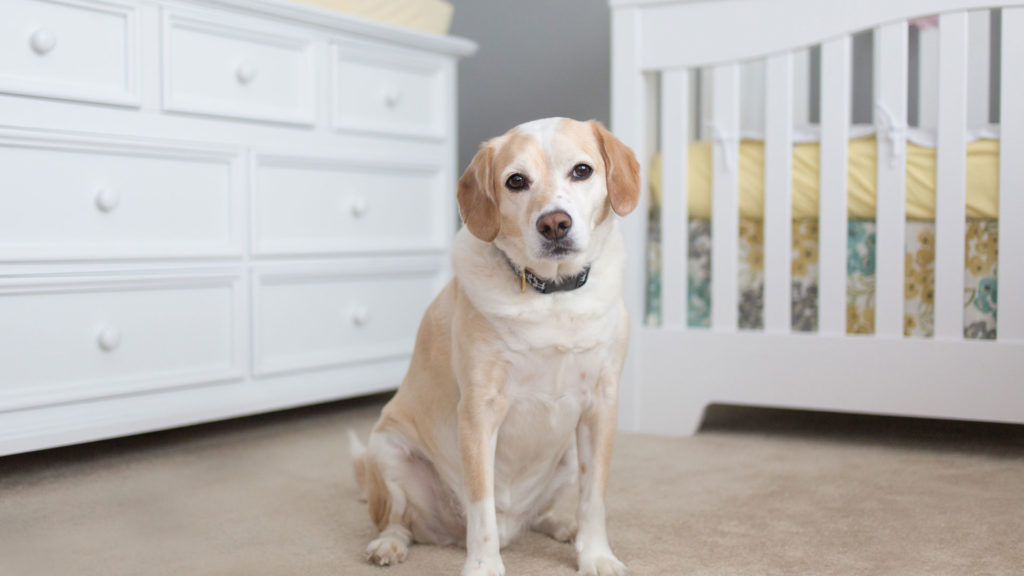Dogs may be man’s best friend, but how do our canine companions fare with babies? Dogs are like having another child; they can have quite the attitude, require lots of attention and care, and are reliant on their “parents.” So dogs can get jealous when a tiny human is suddenly a part of their home and needs Mom and Dad’s attention. The dog is a valuable part of the family too, so make bringing the baby home as seamless as possible for them!
Get a check up
Before bringing Baby home to meet your dog, take the pup to the vet. Make sure they are healthy, do not have anything that could hurt the baby (like worms or ticks), and are up to date on vaccines. Also consider neutering or spaying your dog, as the procedure makes it calmer and less aggressive.
Set up early
It can be difficult for dogs to see their whole home environment changed by the baby. Give them some space by making a dog area in a laundry room or spare room. Put a bed, treats, bowls, and toys here. Before bringing home your new bundle of joy, set up the baby furniture so the dog can get used to new changes. It is important to establish firm boundaries with behavior at this point. If you expect your dog to behave differently, like sleeping in a crate or no longer jumping on furniture, enforce these expectations before the baby comes home. If the dog has to deal with a new, tiny family member at the same time they are learning new rules, it can be overwhelming for the poor pup.
Smell it out
Bring home a baby blanket for the dog to sniff and get used to the baby’s smell. When you decide to introduce them, put the dog on a leash and bring the baby down to the dog’s level. Holding the baby over the dog encourages jumping. Watch your dog for any signs of aggression, but let them sniff and get used to the baby. Don’t allow them to lick the baby, as this is unsanitary.
No matter how well the initial introduction goes, don’t leave the dog alone with baby. Animals can have sudden mood swings and get territorial or scared and react unpredictably. Use baby gates to limit the pets access.
A gentle touch
As the dog learns to respect the baby, teach Baby to respect the dog as they continue to grow. Show the baby how to pet the dog in a way that is enjoyable for it, as children often pet too roughly or erratically. Stop the little one from pulling or tugging on the dog’s ears, fur, or tail. As they get older, show your child how to care for the dog, like giving it treats or new water.
Remember that friendships are forged in a day. It might take a while for the dog to become comfortable with the baby (and vice versa!), but as the baby grows, it will always love the companionship of the family dog!
EXTRA TIP: Children’s’ immune systems are still developing and are not as advanced as adults, thus they can more easily get illnesses. Some animals should not be allowed around children under five as they can carry salmonella and other harmful germs. These animals include lizards, aquatic turtles, snakes, frogs, ducklings, and chicks.

